- Home
- H. G. Wells
Time Machine and The Invisible Man (Barnes & Noble Classics Series) Page 28
Time Machine and The Invisible Man (Barnes & Noble Classics Series) Read online
Page 28
“I wouldn’t do what he did; I’d just—well!” He pulls at his pipe.
So he lapses into a dream, the undying wonderful dream of his life. And though Kemp has fished unceasingly, and Adye3 has questioned closely, no human being save the landlord knows those books are there, with the subtle secret of invisibility and a dozen other strange secrets written therein. And none other will know of them until he dies.
Endnotes
The Time Machine Chapter I
1 (p. 3) Our chairs, being his patents: The Time Traveller has invented and patented furniture in addition to his secret time-travel device, another kind of chair.
2 (p. 3) the Psychologist: Wells reduces his characters to disciplines or social roles; see also the Provincial Mayor, who speaks a few paragraphs down. Wells is concerned with character not as personality but as idea. The Provincial Mayor, for example, is not especially bright, and Wells mocks politicians for not being scientists.
3 (p. 4) Can a cube that does not last for any time at, all, have a real existence?: The Time Traveller says that in addition to “Length, Breadth, Thickness” (noted just below) an object must exist in time. Therefore time is the fourth dimension.
4 (p. 5) his Four-Dimensioned being, which is a fixed and unalterable thing: Wells must include this idea; otherwise, logic would suggest that the Time Traveller would age as he traveled ahead in time. In the world Wells has created, when traveling in time the individual neither ages nor grows younger.
5 (p. 6) Our mental existences... are passing along the Time-Dimension with a uniform velocity from the cradle to the grave: The Time Traveller asserts that thought is able to move back and forth in time. This statement, together with his reference to the balloon as a means to overcome gravity, indicates what his machine will accomplish: It will allow him to move backward and forward in time.
6 (p. 7) plough you for the Little-go. The German Scholars have improved Greek so much: Wells mocks contemporary classical scholarship, especially in Germany, where ancient Greek was regularized and systematized to the point that if a student were to use the Greek actually spoken by Homer or Plato he would probably fail (be ploughed) his examinations (the Little-go).
7 (p. 7) said 1: The “I” here is one of Wells’s witness-narrators, who provides a point of view not located within the protagonist, the Time Traveller, and is therefore seemingly objective.
8 (p. 9) Into the future or the past—I don‘t, for certain, know which: The point is that an object traveling through time is invisible to those whose time it passes through. This is the concept of “diluted presentation” noted a few paragraphs down.
Chapter II
1 (p. 15) anecdotes of Hettie Potter: Wells makes often snide allusions to his contemporaries. This may be a reference to Beatrice Webb (née Potter, 1858-1943); she and her husband Sidney Webb ( 1859-1947) were key figures in the Fabian Society, a Marxist socialist group founded in 1883—1884 to foster socialism without violent revolution. For a time, Wells himself was a member. The Silent Man may be the great artist, craftsman, and poet William Morris ( 1834-1896), another Marxist socialist, whose thinking was antithetical to that of Wells. The red-haired Filby may be the dramatist George Bernard Shaw (1856—1950), yet another Fabian. Wells did not want the “workers’ paradise” envisioned by Karl Marx and Friedrich Engels in the Communist Manifesto (1848)—a utopia of leisure represented in this novel by the feckless Eloi—but an anthill society of disciplined laborers pushing humanity further and further into the technological conquest of the universe.
2 (p. 16) In writing it down... I feel . . . the inadequacy of pen and ink... to express its quality: The narrator (Hillyer) points out the disparity between the Time Traveller’s dramatic account and his own written words.
Chapter III
1 (p. 18) What strange developments of humanity, what wonderful advances upon our rudimentary civilization: The Time Traveller expects the future to be a golden age. This reflects nineteenth-century optimism, especially the age’s faith in technology. He is disappointed to find instead a two-class society: the indolent, pleasure-loving Eloi, the degenerate remnants of an aristocratic class; and the subterranean Morlocks, the equally degenerate remnants of the proletariat, who feed and clothe the Eloi in order to eat them.
2 (p. 19) But to come to a stop involved the jamming of myself... into whatever lay in my way: The Time Traveller fears that if he stops his passage through time in the wrong place he may materialize within an object and kill himself.
3 (p. 20) a winged sphinx: The Time Traveller, greeted by a hailstorm, identifies first a rhododendron, a decorative shrub with flowers, and a huge, weathered statue of a hovering sphinx. The frail flowers are pounded by the hail and may represent the relationship between the Eloi and the Morlocks. The sphinx here symbolizes mystery or enigma: Is its smile one of mockery—because the Time Traveller’s expectations about the future are turned upside down? Is its condition, suggestive “of disease” (a few lines down), an image of the diseased state of humanity?Wells may have expected his readers to link this sphinx to a quotation from Thomas Carlyle ( 1795-1881 ) on the cover of the novel’s first edition. Carlyle suggests the problem facing the future will be that of organizing labor not as an independent force with its own interests apart from those of capitalists, but as an integrated part of production. The Morlocks may be a labor force so well organized and so in control of production that its only task is to feed on those it once served.
4 (p. 21) very beautiful . . . but indescribably frail: This is the Time Traveller’s first encounter with the Eloi: small, weak, seemingly diseased, but beautiful in the style of nineteenth-century English art, like the figures in Pre-Raphaelite paintings or in the illustrations of Aubrey Beardsley (1872—1898)—the kind of art for art’s sake that Wells despised.
Chapter IV
1 (p. 22) their Dresden-china type of prettiness: Dresden-china figurines, often of shepherds and shepherdesses, were purely decorative and of no practical use. The Eloi, though sexually active, are androgynous figures; for example, the male lacks a beard, a feature common to most men in the late-nineteenth century. The Time Traveller quickly concludes that the Eloi are of extremely limited intelligence, friendly but with no interests but sensual pleasure. Their language sounds like music but lacks real content. Like the inhabitants of the South Sea islands, they deck out the visitor with flowers by way of greeting, but they have no curiosity about him.
2 (p. 25) strict vegetarians: The Eloi eat only fruit, but whether this is by choice or by breeding is unclear; all other animals are extinct.
3 (p. 26) there were no small houses to be seen: The Eloi have only communal buildings, and the family no longer exists. Wells would approve of this society under other circumstances because it makes everyone children of society, and identity derives from community, not family or nation. The Eloi all dress alike, so the sexes are not dif ferentiated by costume. The children are simply copies of the adults, and grow up quickly, at least in sexual terms. A few lines down, the Time Traveller concludes that they live a communistic life, but he cannot at this point determine its nature.
4 (p. 28) the whole earth had become a garden: Here “garden” means a park with plants and trees, rather than a place where food plants are cultivated—that is, there is no wilderness left. In the paragraphs that follow, Wells suggests that the new golden age he has entered, despite the fact that there is no private property, is a nightmare. In depicting the classless society of the future, Wells parodies the relationship between humans and the animals they eat.
5 (p. 29) The whole world will be intelligent, educated, and co-operating. This is Wells’s idea of what will result if his notions of industrial socialism and the unification of labor and production take effect. There will be no families, no nations, no patriotism, no religion.
6 (p. 30) the fate of energy in security: Wells shows his contempt for the golden age promised by the Marxists. Unless humanity continues to work (see, a few lines down, “the grindstone of pain
and necessity”) it will degenerate. These ideas are not unique to Wells and reflect one of the major currents of late-nineteenth-century thought: the need to return to nature; this is the message to be found in W. H. Hudson’s The Purple Land (1885).
Chapter V
1 (p. 36) their language was excessively simple.... few, if any, abstract terms: The Eloi communicate using nouns (concrete substantives) and verbs. Their minds produce almost no abstract thoughts or metaphors.
2 (p. 37) sanitary apparatus: The Time Traveller is fascinated by what he takes to be a sewage system, a novelty in England at the time the novel appeared.
3 (p. 37) Utopias: The word “utopia” derives from the Greek for “no place,” and signifies an imaginary community, perfect in laws and social relationships. Sir Thomas More coined the term in 1516, but Edward Bellamy (Looking Backward, 1888) and William Morris (News from Nowhere, 1891 ) had written about new utopias in the nineteenth century. Here Wells criticizes Morris, a Marxist.
4 (p. 37) gap between a negro and a white man: Wells’s racist attitude toward blacks, typical of his time, also reflects the attitude of the Time Traveller to the Eloi—he considers them inferior.
5 (p. 38) the poor mite: The phrase means “poor little thing.” Weena is not a person for the Time Traveller but a kind of pet. Her name may be a decayed form of Rowena, a mythological figure in English history. Rowena is alluring, while Weena is not. Two paragraphs down, the Time Traveller says he hasn’t come into the future to engage in “a miniature flirtation.”
6 (p. 41 ) Grant Allen’s: A member of the Fabian Society, Grant Allen was the author of Strange Stories (1884).
7 (p. 41) the younger Darwin: George Howard Darwin (1845—1912), son of Charles Darwin, speculated that the orbit of the earth around the sun would eventually decay—the earth would fall back into the sun. The Time Traveller finds the weather hot and wonders if the sun is hotter or if the earth is closer to the sun. The theory that the sun will someday die is brought to narrative life toward the end of the novel (chapter XI) when the Time Traveller visits the last age of planetary life.
8 (p. 42) little ape-like figure: The Time Traveller sees a Morlock. Their similarities to the Yahoos in Gulliver’s Travels reflects Wells’s admiration for Swift. The Time Traveller is disgusted at the sight of them, much preferring the Eloi, harmless, pretty, but inferior human types. If the Eloi are degenerate aristocrats, the Morlocks are degenerate factory workers.
9 (p. 43) the economic problem: The Time Traveller until now had been unable to see how the Eloi were fed and clothed. In the pages that follow, he links the Morlocks to the poor workers of his own day; gradually the workers have adapted to underground life. But the Time Traveller still thinks the Eloi are the masters and the Morlocks their slaves, not realizing the Eloi are nothing more than food for the Morlocks.
10 (p. 45) Morlocks: The Time Traveller uses the term for the first time, though it is not clear what its source is. In Wells’s socialism, the situation of the Morlocks is the result of labor unions, which eventually work in their own interest and not, as he would prefer, in the interest of the technological conquest of nature.
Chapter VI
1 (p. 47) If only I had had a companion: Weena is clearly no companion for the Time Traveller.
2 (p. 49) the language they had: The Morlocks and Eloi are so estranged as vestiges of ancient social classes that they cannot communicate ; they have no common language.
Chapter VII
1 (p. 54) The Time Traveller paused ... large white mallows, upon the little table: While the Time Traveller allows no interruptions, he does interrupt himself. Here the narrator, Hillyer, interjects a comment: He describes the withered flowers, “not unlike large white mallows,” the Time Traveller finds in his pockets. These flowers, which Weena stuffed into his jacket pockets, are the only evidence of his journey.
2 (p. 54) a Faun . . . minus the head: The faun, or satyr, is a mythological creature, human but with goat-like legs; it is often associated with pastoral literature. The world of the Eloi is pastoral, but they are the sheep the Morlocks slaughter. The faun is headless because no shepherd watches over the Eloi.
3 (p. 56) I pitied this last feeble rill from the great flood of humanity: The Time Traveller is sorry for the Eloi, the final little brook (rill) of the flood that was humanity. He is certain now that the Morlocks eat the Eloi.
4 (p. 57) Carlyle-like scorn of this wretched aristocracy in decay. Taking a cue from Thomas Carlyle (Sartor Resartus, 1833-1834), who considered aristocrats superfluous, the Time Traveller had scorned the Eloi as a useless class, but he still feels pity for them because they, unlike the Morlocks, look human. He sympathizes with their situation—they suffer “intellectual degradation” (stupidity), and they fear the dark. At the same time, he realizes the Morlocks are useful because they work.
Chapter VIII
1 (p. 58) Wandsworth and Battersea: The reference is to districts, formerly independent boroughs, on the south bank of the Thames, part of modern London. The Time Traveller has never left London, though now the city is on an estuary, an arm of the sea, or a creek, a small inlet or bay, rather than a river. He wonders about the evolution of sea animals but can make no observations.
2 (p. 58) more human than she was: The Time Traveller concludes that Weena is not human, that she is merely an animal capable of affection.
3 (p. 58) after the fashion of the Megatherium.... huge skeleton barrel of a Brontosaurus: These two extinct creatures—the former a giant ground sloth of the Oligocene epoch, the latter a giant, herbivorous dinosaur of the Jurassic period—represent evolutionary dead ends for Wells. They were doomed, as are the Eloi and the Morlocks, because they lacked intelligence.
4 (p. 60) footnote: The presence of a comment by an “editor” supports the notion that Hillyer published the Time Traveller’s account.
Chapter IX
1 (p. 69) horrible death of little Weena: The Time Traveller mourns the loss of Weena as if she were a favorite pet. He is consoled by the fact that the Morlocks did not get to eat her. Wells humanizes the Time Traveller, making him long for his friends and house, but this emotion fades.
Chapter X
1 (p. 70) Like the cattle... their end was the same: The Time Traveller half-quotes verses from the Bible, the Book of Psalms, where God says it is He who provides grass for animals and His Word for humans. His meaning appears below, where he says mankind labored to provide itself with “comfort and ease,” that its “watchword” or slogan was “security and permanency.” Absolute balance in society ended in the Eloi and the Morlocks. For Wells, this society at peace with itself creates no challenges to the intellect, no changes to deal with.
Chapter XI
1 (p. 74) the work of the tidal drag was done: Wells falls back on G. H. Darwin’s theory (see chapter V, note 7) that the earth will eventually stop rotating. The sun, grown old, barely warms the one side of the earth facing it.
Chapter XII
1 (p. 81) 1 seemed to see a ghostly, indistinct figure ... for a moment. Wells reverses the perspective. Now instead of the Time Traveller seeing Hillyer, it is Hillyer who sees the Time Traveller departing on his second voyage.
Epilogue
1 (p. 82) he swept back into the past: In this paragraph, Hillyer lists a number of remote periods from the past, imagining prehistoric humans as “blood-drinking, hairy savages” not unlike the Morlocks, wondering if the Time Traveller has gone as far back into the past as he went into the future.
2 (p. 83) gratitude and a mutual tenderness: Hillyer seems to romanticize the Time Traveller’s relationship with Weena, elevating it into love.
The Invisible Man Subtitle
1 (p. 85) A Grotesque Romance: Wells’s subtitle locates this work in the context of supernatural writing; a romance is a story in which scenes and incidents are removed from ordinary life, as opposed to a novel, which concerns itself with realistic character and society. He is also signaling the reader that this “grote
sque” (horrifying) tale may also contain encoded or secret messages; that is, he suggests that the work may be an allegory, that there is more to it than its literal meaning.
Chapter I
1 (p. 91) stranger: Wells plays “strange” off against “stranger.” Griffin is strange, almost an albino normally, and is wrapped up head to toe so people won’t see he is invisible. A stranger to the town of Iping, a metaphor of backward English society, he is a man who has transformed himself into something new.
2 (p. 91 ) Bramblehurst: The name implies “brambles,” prickly bushes growing wild.
3 (p. 91) Coach and Horses: The name of the pub suggests rural, pre-industrial England.
Chapter II
1 (p. 101) an unusually strange sort of stranger: Here Wells echoes the use of the words in chapter 1.
Chapter III
1 (p. 101) The Thousand and One Bottles: The words in the title allude to the Arabic classic The Thousand and One Nights, in which many stories feature magic, here replaced by chemistry.
2 (p. 101) the twenty-ninth day of February: Wells uses this leap-year date to enhance the strangeness surrounding Griffin. No year is mentioned because Wells wants the events to seem recent yet vague.
3 (p. 101) Fearenside: This name, which can be pronounced “fear inside,” labels these rural people as backward bumpkins.

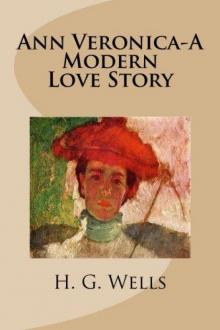 Ann Veronica: A Modern Love Story
Ann Veronica: A Modern Love Story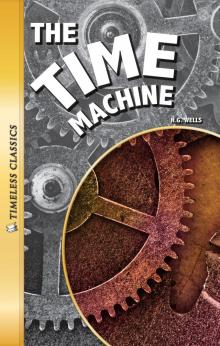 The Time Machine
The Time Machine The First Men in the Moon
The First Men in the Moon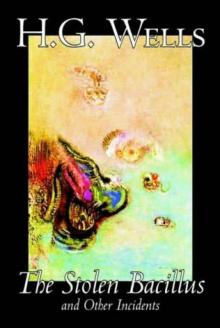 The Stolen Bacillus and Other Incidents
The Stolen Bacillus and Other Incidents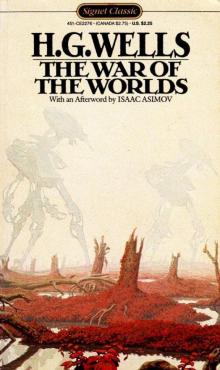 The War of the Worlds
The War of the Worlds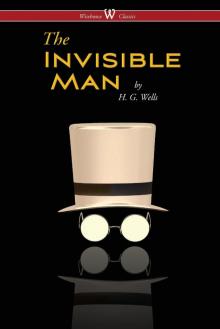 The Invisible Man: A Grotesque Romance
The Invisible Man: A Grotesque Romance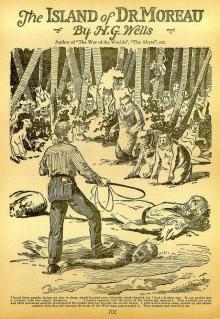 The Island of Doctor Moreau
The Island of Doctor Moreau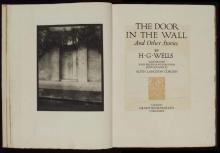 The Door in the Wall, and Other Stories
The Door in the Wall, and Other Stories The Best Science Fiction Stories of H G Wells
The Best Science Fiction Stories of H G Wells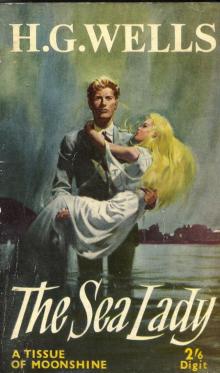 The Sea Lady
The Sea Lady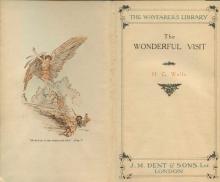 The Wonderful Visit
The Wonderful Visit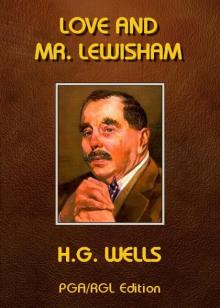 Love and Mr. Lewisham
Love and Mr. Lewisham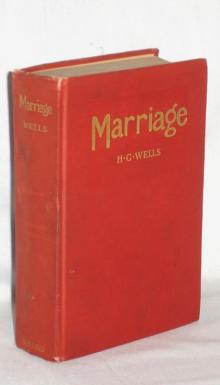 Marriage
Marriage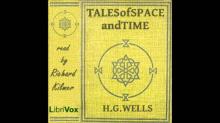 Tales of Space and Time
Tales of Space and Time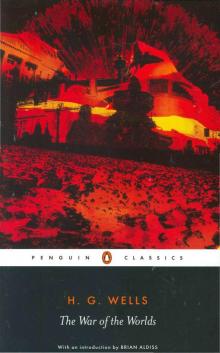 The War of the Worlds (Penguin Classics)
The War of the Worlds (Penguin Classics)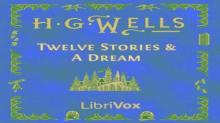 Twelve Stories and a Dream
Twelve Stories and a Dream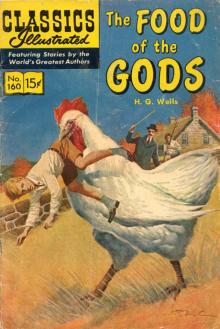 The Food of the Gods and How It Came to Earth
The Food of the Gods and How It Came to Earth Tono-Bungay
Tono-Bungay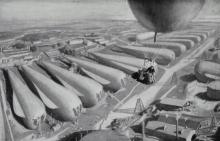 The War in the Air
The War in the Air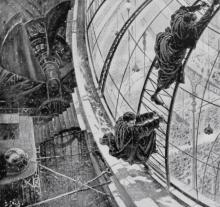 The Sleeper Awakes
The Sleeper Awakes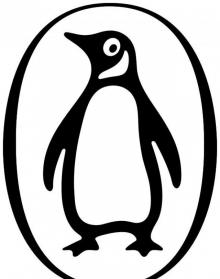 The Country of the Blind and Other Stories
The Country of the Blind and Other Stories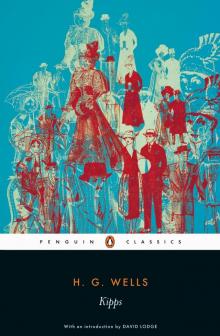 Kipps
Kipps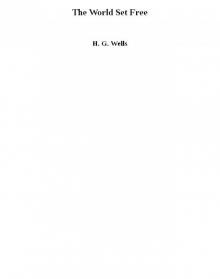 The World Set Free
The World Set Free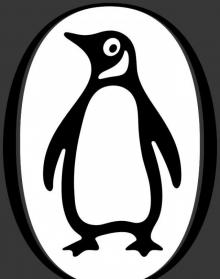 The Country of the Blind and other Selected Stories
The Country of the Blind and other Selected Stories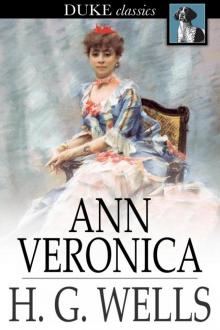 Ann Veronica
Ann Veronica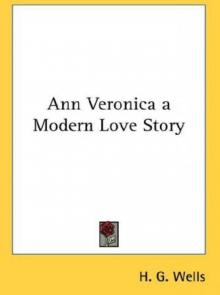 Ann Veronica a Modern Love Story
Ann Veronica a Modern Love Story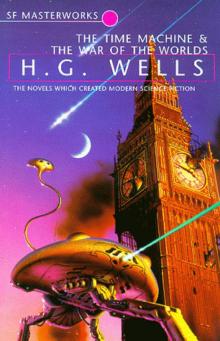 The Time Machine and The War of the Worlds
The Time Machine and The War of the Worlds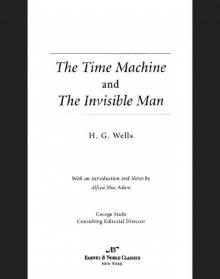 Time Machine and The Invisible Man (Barnes & Noble Classics Series)
Time Machine and The Invisible Man (Barnes & Noble Classics Series)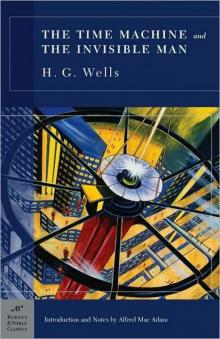 The Time Machine and The Invisible Man
The Time Machine and The Invisible Man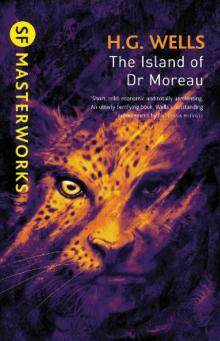 The Island of Dr. Moreau
The Island of Dr. Moreau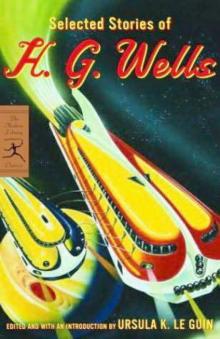 Selected Stories of H. G. Wells
Selected Stories of H. G. Wells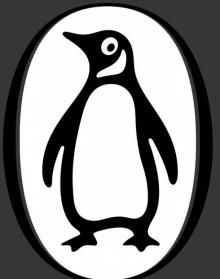 Island of Dr. Moreau
Island of Dr. Moreau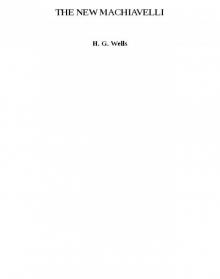 THE NEW MACHIAVELLI
THE NEW MACHIAVELLI